The Mi 11 has just been launched, as a usual, Xiaomi has released a phone packed full of specs and features at a value-for-money price. Of course, the biggest thing to know about Xiaomi’s latest flagship smartphone is the Snapdragon 888 under the hood—the first official Malaysian phone to run on Qualcomm’s latest chipset.
But I’d say that the Mi 11 is far from a one-trick-pony, and among other things, Xiaomi has equipped it with an impressive 120Hz WQHD+ display, and even a 108MP main camera to rival Samsung’s. All of that is available at a value-for-money price in Malaysia, too, with official pricing as follows:
Mi 11 – 8GB RAM, 128GB storage- RM2,799
Mi 11 – 8GB RAM, 256GB storage – RM2,999
This made me think about other Android flagships that have been released in 2021, most notably, the Samsung Galaxy S21 series. The latter is the only other Android flagship that has reached Malaysian shores (officially), although the Malaysian variant the Galaxy S21 uses an Exynos 2100 chipset, as opposed to the Snapdragon 888 powering the model in other regions.
Galaxy S21 Ultra 5G 128GB – RM4,999
Galaxy S21 Ultra 5G 256GB – RM5,299
Galaxy S21 Ultra 5G 512GB – RM5,899
So, if you were thinking of picking up the top-end model in the Galaxy S21 series, the Ultra, here’s a quick look at whether the Mi 11 might scratch your itch instead.
Key specs at a glance
From the offset, it’s clear that both phones have some remarkably competitive specs with one another. Both feature displays with identical resolutions, and even identical refresh rates. They also use similar 108MP main cameras, although the Galaxy S21 Ultra’s pair of telephoto shooters are a big improvement over the Mi 11’s macro lens (or
“telemacro”, as they call it).
However, there is one area that the Mi 11 trumps its more expensive competitor: charging. Samsung’s flagship device supports 25W wired charging, along with 15W wireless charging; the Mi 11, on the other hand, can be charged via USB-C at an impressive 55W, while wireless charging has a max speed of 50W. The Galaxy S21 Ultra does have a slightly larger battery however, with a 5,000mAh battery compared to the Mi 11’s 4,600mAh pack.
But you shouldn’t forget that the Galaxy S21 Ultra does not come with a charger in the box. Xiaomi, on the other hand, provides a charger—and a 55W GaN brick, at that.
And if you’re in Malaysia, something else that counts in favour for the Mi 11 is the Snapdragon 888 under the hood. The Galaxy S21 Ultra gets Qualcomm’s chip in select regions—but unfortunately, Malaysian spec variants are equipped with the Exynos 2100. Of course, Samsung’s in-house chip has come in leaps and bounds over the years, and the positive results have already been documented. But if you’re looking for the best and newest Qualcomm chip, Xiaomi’s more affordable flagship is the one for you.
You should also note that the Mi 11 in Malaysia only comes with a maximum of 8GB of RAM, and 256GB of storage. The Galaxy S21 Ultra, in contrast, has memory options of up to 16GB of RAM and 512GB of storage. I don’t know about you, but 256GB of storage seems to be rather small for a top-end variant (for a top-end phone, no less), so if you have high local storage needs, Samsung’s options give you more flexibility (and RAM for multi-tasking).
Of course, there are also a bunch of other factors to consider that go beyond specs on paper, such as the OneUI vs MIUI debate, or even the camera processing capabilities of each smartphone. One of the biggest complaints for Xiaomi’s OS over the years has been the presence of ads—although you can disable them with a rather tedious process (find out how by clicking here).
Plus, Samsung’s ecosystem is a lot more complete than Xiaomi’s alternative, which is practically non-existent. Samsung Pay, Knox, and Galaxy-only features that work with peripherals like the Galaxy Buds Pro certainly count in Samsung’s favour, particularly compared to Xiaomi.
But the biggest factor that counts in Xiaomi’s favour is the affordable price of the Mi 11. At RM2,799 for the base model, this might just be the best smartphone you can buy under the RM3,000 mark, and Samsung’s base spec Galaxy S21 Ultra goes for almost double that price. Of course, you can also consider the Galaxy S21 or S21+, but for the purposes of comparing the best against the best, it seems appropriate to pit the Mi 11 against the Galaxy S21 Ultra for now.
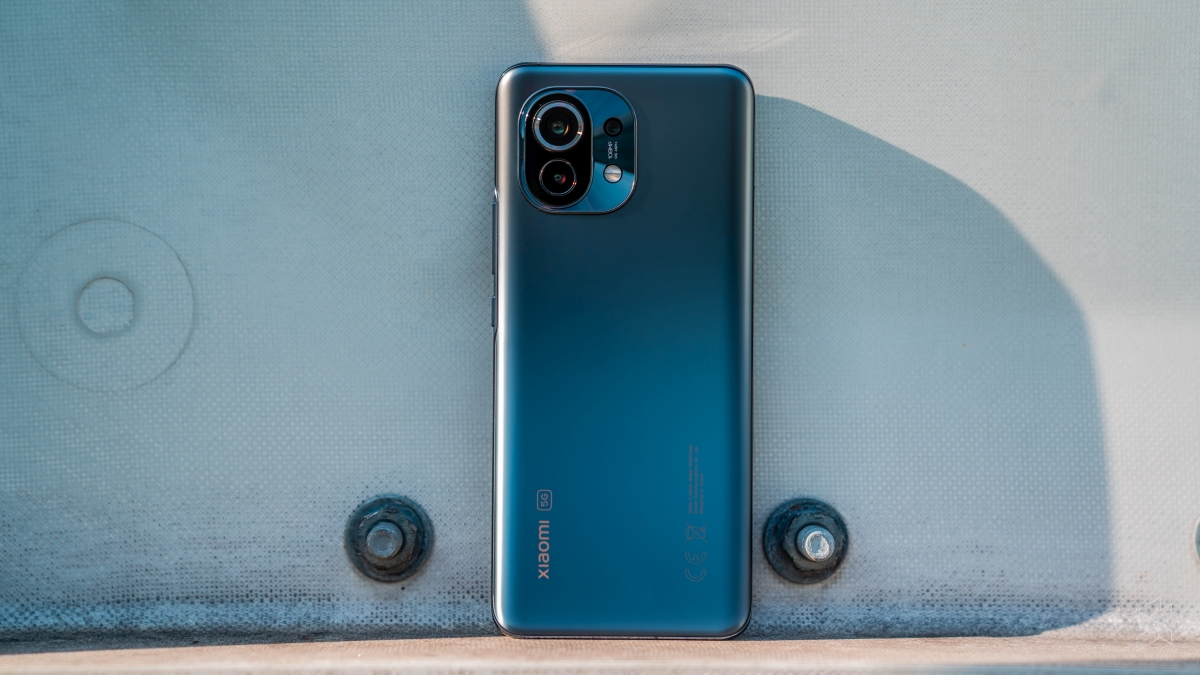
So, what do you think? Are you team Mi 11? Or team Galaxy S21 Ultra? We’re working on a full review for the Mi 11, but in the meantime, let us know what you think in the comments section below. If you’d like to read our full coverage of the Mi 11, scroll down to the related reading section down below.
Related reading
The post How does the Xiaomi Mi 11 stack up against the Samsung Galaxy S21 Ultra? appeared first on SoyaCincau.com.
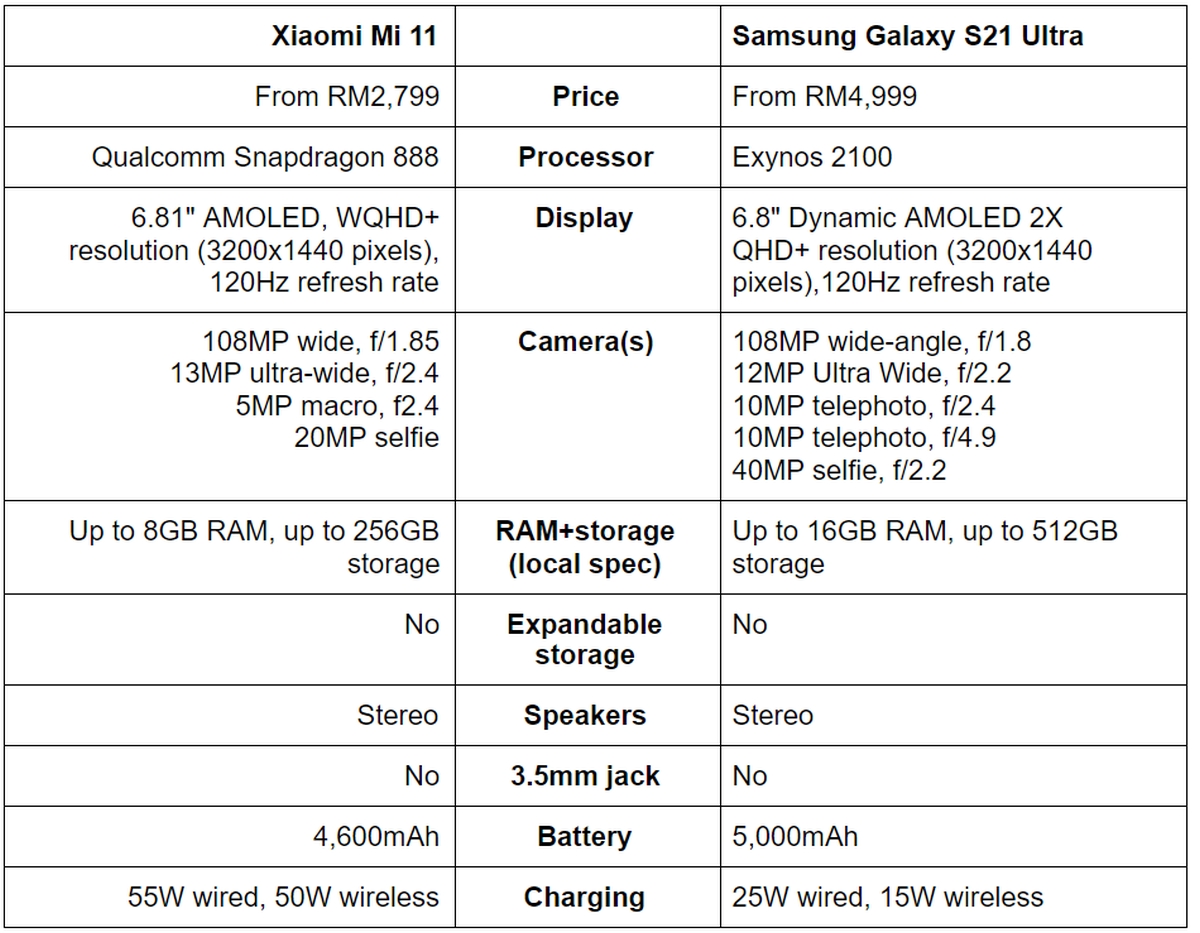
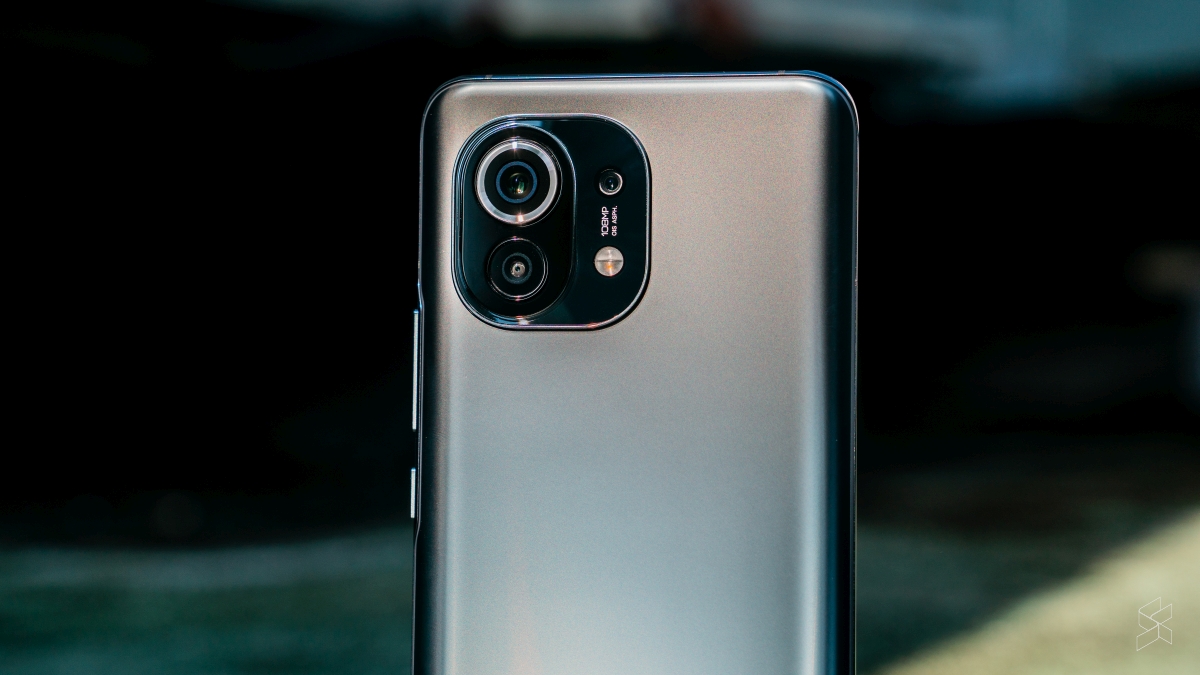
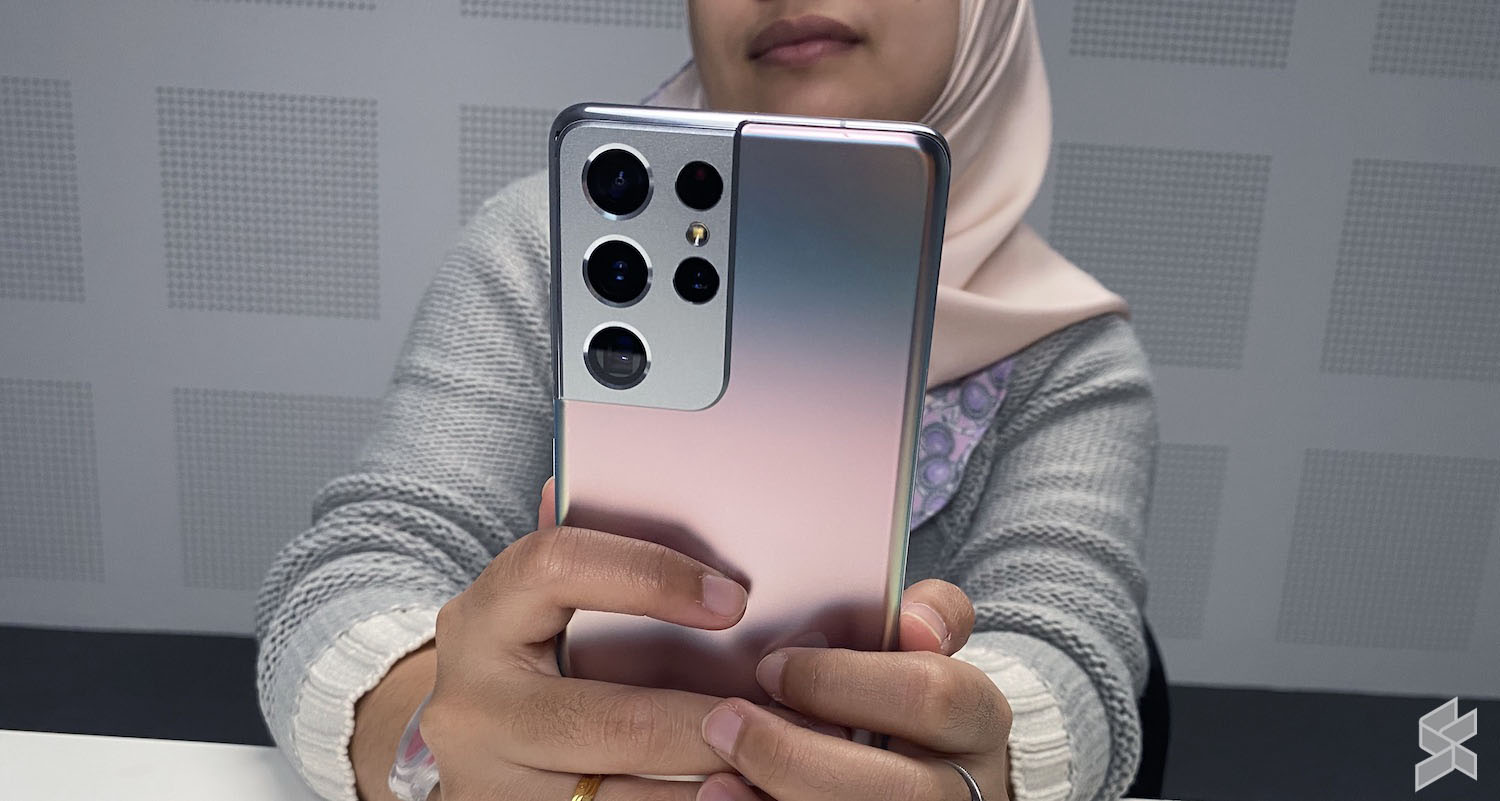
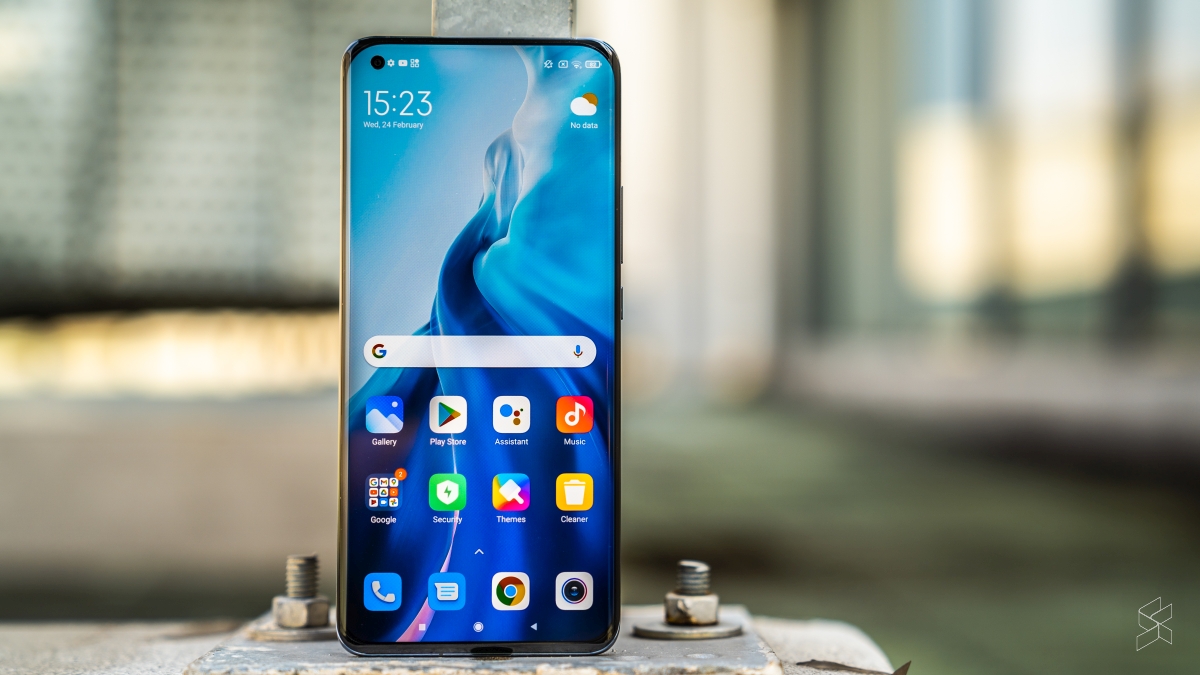
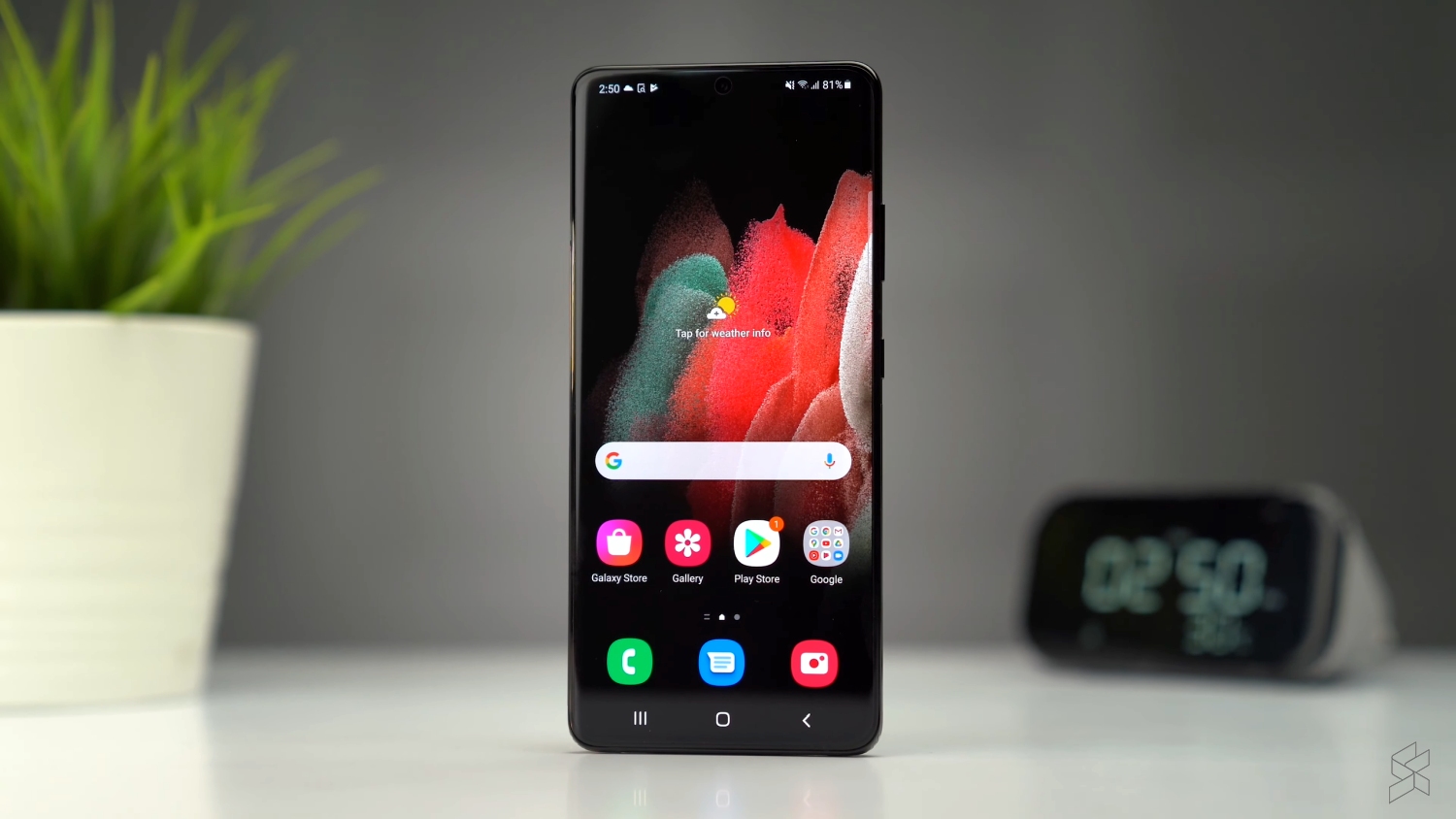
0 comments :
Post a Comment